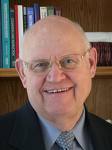M. David Merril(2)

M. David Merrill is an instructional effectiveness consultant and professor emeritus at Utah State University. He has been a major contributor to the field of instructional technology, especially around first principles of instruction, as outlined in five steps of engagement. Instruction occurs when the learner: engages in solving real-world problems, uses existing knowledge as the basis for new learning, receives a demonstration of new knowledge, applies new knowledge and integrates that knowledge. Merrill currently teaches online courses at Brigham Young University Hawaii and University of Hawaii. Merrill believes that “information is not instruction.”?
T&L contributing editor Matt Bolch spoke with Mr. Merrill about his take on edtech.
MB: So what's the difference between information and instruction??
Information is just content. The Internet is filled with information on almost every subject. Instruction is information plus directions and activities to facilitate the acquisition of that information and the application of that information to solve complex problems or do complex tasks. In addition to information, effective instruction includes the selection, sequence and structure of subject matter content (information) to facilitate learning. It includes demonstration in specific situations of how the information can be used to solve problems or do complex tasks. It includes opportunity to apply the information to specific situations with feedback. It includes guidance during demonstration and coaching during application. It includes an opportunity to cooperate and critique the application of the information by others. In short, information is not instruction.??
MB: Do modern teaching methods recognize this difference??
Some modern teaching methods certainly recognize the difference. But the problem is that everyone is a teacher or thinks they are. But they don't know these modern teaching methods, so they fail to use effective, efficient and engaging instructional strategies. Too many instructors, trainers and others whose job it is to teach are inadequately trained in effective instructional strategies. Because they have spent a considerable amount of their life in school, they feel they know all about teaching. Unfortunately, much of what they experience is ineffective, but this is what they know and dispensing information is what they do.??
MB:What shortcomings do you see in today's k-12 environment as it relates to learning?
By far the most common teaching method is characterized by “Tell and Ask,” where the instruction tells some information and asks the learner to remember some of it by answering test questions that require only recall or recognition of the information. This form of instruction is characterized as “Spray and Pray and Remember What I Say” instruction. The instructor spews forth lots of information and prays that some of it may stick, and then asks a few multiple choice, true/false or short answer questions to see if some of it did stick. Of course, we all know that the information is soon forgotten. Tell and Ask instruction does little to enable learners to solve problems or do complex tasks. Even after instruction, way too much skill development is left to on-the-job learning. Too many folks leave so-called training programs with some information crammed into their head but with little skill in using this information in the real world.??Finally, the best teaching goes on in early elementary school. Why? Because teachers of young children recognize that these learners have little or no experience so that they can't process just information. But as the school years pass by the amount of effective teaching morphs into Tell and Ask instruction that by the time young people get to high school or college way too much of their instruction is merely Tell and Ask.?
Tools and ideas to transform education. Sign up below.
